It’s hard to imagine a time where Sonic the Hedgehog didn’t exist. A time when he wasn’t ever present on video game shelves, where a cartoon featuring the character wasn’t airing on television, when a monthly comic book wasn’t available to buy at your local comic shop. But back in 1990, Sonic was just a dream. Springing from the mind of Naoto Ohshima, there was certainly a time when he was nothing more than a simple doodle scratched upon a napkin. Mr. Hedgehog, one drawing among a sea of many, all of them vying to become the face, and the hope, of an entire video game company.
What was it like when Ohshima sat in Central Park all those years ago, signaling for random passersby to see his funny, slightly strange doodles? How many of those people had the slightest idea what SEGA was? What videogames even were? Did they just think of him as a cartoonist who had made his way to the big city, looking for inspiration among the towering skyscrapers? When shown the drawings of that egg-shaped man, or that spiny blue critter who couldn’t wait to run off the page, what did they say? Did anyone have the slightest inkling they were witness to history?
Likely not. After all, it was just a drawing on a piece of paper. No grander sense of the world that was being created. Of the gameplay slowly being refined in Japan. No idea that this character, who would take the name Sonic, was destined to forever alter the video game industry. If they had been told ahead of time, those who were aware of Nintendo’s dominance would have surely laughed. Video games were dead in America until Mario brought them back to life, how could anyone attempt to overthrow them? Where would you even begin?
Well, with a hedgehog. As blue and cool as the planet he called home.
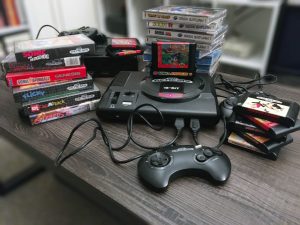 One could argue SEGA’s success came down to luck, but that would be unfair to the developers making the original game. It was an experiment in what a platformer could be. Many games tried to follow in the footsteps of Super Mario Bros., but most were content in only emulating the experience, not evolving it. Sonic the Hedgehog strived to be more. The physics, the flow, the woven level structure. It was clear this wasn’t an experience you could have on an NES, but SEGA wanted to make clear that not even the Super Nintendo could offer such an experience. The marketing team at Sega of America were not afraid to show Sonic running alongside Super Mario World, letting both games speak for themselves. Sure, you could say Sonic was cooler, but why not let the consumer decide for themselves which one they liked more?
One could argue SEGA’s success came down to luck, but that would be unfair to the developers making the original game. It was an experiment in what a platformer could be. Many games tried to follow in the footsteps of Super Mario Bros., but most were content in only emulating the experience, not evolving it. Sonic the Hedgehog strived to be more. The physics, the flow, the woven level structure. It was clear this wasn’t an experience you could have on an NES, but SEGA wanted to make clear that not even the Super Nintendo could offer such an experience. The marketing team at Sega of America were not afraid to show Sonic running alongside Super Mario World, letting both games speak for themselves. Sure, you could say Sonic was cooler, but why not let the consumer decide for themselves which one they liked more?
It was a campaign built from their own private focus group research. Months before Sonic would be prominently featured at the 1991 Summer Consumer Electronics Show, the marketing wizards at SOA wanted to know what people thought of Sonic. In secret, they gave people the chance to play Super Mario World months before it was released in the west, then let them play an early build of Sonic the Hedgehog. More often than not, those who walked in saying they were Mario fans were swayed by the blue blur. How could they not be won over? Catchy music that transcended the idea of “game music.” Bright, colorful art showing the slightly surreal world of South Island. Characters that were instantly recognizable and charming. And of course, the way the game felt, how satisfying it was to make Sonic reach top speeds, run through loops, and roll down hills. The game didn’t value style over substance. Each element was thoroughly thought out, carefully considered. Ohshima’s art, Naka’s engine, and Yasuhara’s level design prowess came together at just the right time. If one of those men were missing, it’s hard to say what Sonic would have become, if the game had gotten off the ground in the first place.
 Reflecting back, it’s bittersweet to think that the core trio of Sonic Team would never end up working together on another game. Naka and Yasuhara flew off to America, eventually working on the numbered sequels while Ohshima remained in Japan, directing the fan-favorite Sonic CD. When Naka returned to Japan and worked with Ohshima during the Saturn era of Sonic Team, Yasuhara remained in the states, lending a hand to the spin-offs 3D Blast and Sonic R before eventually leaving the company. After Sonic Adventure, Ohshima would depart, Naka remaining as head of Sonic Team until 2005.
Reflecting back, it’s bittersweet to think that the core trio of Sonic Team would never end up working together on another game. Naka and Yasuhara flew off to America, eventually working on the numbered sequels while Ohshima remained in Japan, directing the fan-favorite Sonic CD. When Naka returned to Japan and worked with Ohshima during the Saturn era of Sonic Team, Yasuhara remained in the states, lending a hand to the spin-offs 3D Blast and Sonic R before eventually leaving the company. After Sonic Adventure, Ohshima would depart, Naka remaining as head of Sonic Team until 2005.
Though it’s been over fifteen years since any of the original members of Sonic Team were actively involved in the franchise, their legacy has continued to endure. The simple fact that the original Sonic the Hedgehog has been rereleased time and again is enough to prove its longevity. From handheld systems to the clickwheel iPod, if you’ve owned any sort of device capable of playing a game, Sonic has been there. The mobile version from 2013, lovingly recreated in the Retro Engine, reinforced this legacy, a reminder at just how groundbreaking that first game was, even if the Labyrinth Zone can still send a shudder of fear up one’s spine when that drowning jingle begins.
Back in 2011, I wondered what the next ten years would have in store for us. The first ten gave us some of the greatest games ever put onto a console, let alone a SEGA branded one. The following ten gave us some fan favorite highs, and some nearly universally agreed lows. With Sonic Generations on the horizon, it was impossible to predict what the next ten would give us. I don’t think anyone would have predicted the gameplay Sonic Lost World offered as the next mainline game, and fewer still would have been able to predict the Sonic Boom subsection of the franchise. A one-two punch that was as divisive as anything that had been released under the Sonic umbrella.
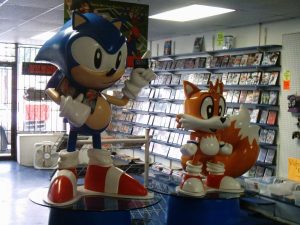
Statues from the 90’s. Picture from the Atari Age forums.
The fact those games were divisive is not something I would decry. In many ways, it is part of the joy of the Sonic experience. The original game was an experiment. It only makes sense that the franchise allows other experiments to cultivate. Some flourish, others flounder, but very rarely are they boring. Even for the most critically panned games, there is some joy to be found in them. Be it the soundtrack, or an exceptional moment of storytelling, or a surprising bit of level design that sticks with you years afterwards. Deep down, there is something in each game, tv show, or comic that is quintessentially Sonic.
How many times has Sonic inspired, even at the franchises lowest points? It is impossible to catalogue all the fan content that has been created over the years. Art that captures everything that is Sonic, or diverts wildly in ways that a corporate mindset would never allow, allowing for the most far flung experimentation imaginable. Fan comics, animation, remixes, films, and of course fan games. Expressions of fandom put together to make something new. And those early fan creations inspire more art, young fans growing up to create their own stories, with their own unique characters, Sonic simply being a stepping stone to help find your own voice.
That is the nature of the character, after all. Always on the go, yet being there for his friends. Possessing that strong sense of justice, helping others along on their path. Beginning with the bond between Sonic and Tails in Sonic the Hedgehog 2, all the way up to Sonic Forces and the avatar character becoming sure of themselves in the face of great adversity, it has been Sonic who helps lend a hand, to bolster and strengthen. The cool big brother anyone would want, even if they sometimes can get agitated and impatient, tapping their foot, waiting for something to happen. It is a confidence that can be felt even beyond the games. How many times has a fan of the series sat in their car, driving along during some long, boring road trip, when suddenly they imagine Sonic the Hedgehog running right alongside? Classic, modern, or otherwise, flashing a grin and giving a thumbs up before dashing off to another adventure?
Where other gaming franchises have fallen to the wayside, Sonic has continued to endure. The strength of those original games launched Sonic into the stratosphere, at his height a character as recognizable, if not more so, than Mickey Mouse. Half a dozen animations, the longest running licensed comic in history, a feature film that has introduced Sonic to a brand new generation. The core elements of Sonic speak across race, gender, nationality, and generations. The appeal of Sonic and his many friends can not be understated. One could write a plethora of academic papers exploring just why this is, but it might just be as simple as this:
Sonic is fun.
Personally, the highlight of the last ten years has to be the release of Sonic Mania. A game that I had been waiting for to some degree since I played Sonic & Knuckles all those years ago. A reminder that the formula created in those original games was still as strong and viable as they were in the early 90’s, and through a modern lens could offer yet another wealth of possibility. Familiar locations linked together with new zones. There is a reason it was praised as much as it was, mentioned in the same breath as Sonic 3 or Sonic Adventure as a contender for the greatest Sonic game ever made. And heck, it was fun.
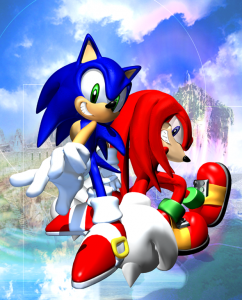 Now, we sit and look once more to the future, unsure of what’s in store. When Sonic Generations was on the horizon, Sonic’s 20th anniversary gave us a downloadable demo of Classic Sonic’s Green Hill Zone, giving us some idea of what was to come. For Sonic’s 25th, both Mania and Forces were announced, and while the latter was relegated to only a CG teaser, being shown the clear vision of what form Mania would take was more than enough to tide us over. The next Sonic game? Well, that’s all up for speculation. Another CG teaser tells us that it is indeed coming, but as to what form it will take, that is still up in the air. Takashi Iizuka, the current head of Sonic Team, has stated the team hopes to push the franchise in a new direction, laying the foundation for the next twenty years of three dimensional Sonic gaming. But before then, the release of Sonic Colors Ultimate and Sonic Origins is there to remind us of Sonic’s heritage, the latter once again featuring the elusive Sonic 3. Familiar games waiting for an unfamiliar audience, for the new generation experiencing the character for the first time, be it through the movies or the upcoming animated series Sonic Prime.
Now, we sit and look once more to the future, unsure of what’s in store. When Sonic Generations was on the horizon, Sonic’s 20th anniversary gave us a downloadable demo of Classic Sonic’s Green Hill Zone, giving us some idea of what was to come. For Sonic’s 25th, both Mania and Forces were announced, and while the latter was relegated to only a CG teaser, being shown the clear vision of what form Mania would take was more than enough to tide us over. The next Sonic game? Well, that’s all up for speculation. Another CG teaser tells us that it is indeed coming, but as to what form it will take, that is still up in the air. Takashi Iizuka, the current head of Sonic Team, has stated the team hopes to push the franchise in a new direction, laying the foundation for the next twenty years of three dimensional Sonic gaming. But before then, the release of Sonic Colors Ultimate and Sonic Origins is there to remind us of Sonic’s heritage, the latter once again featuring the elusive Sonic 3. Familiar games waiting for an unfamiliar audience, for the new generation experiencing the character for the first time, be it through the movies or the upcoming animated series Sonic Prime.
Sonic is, after all, for everyone. The hope that Ohshima, Naka, and Yasuhara had back when they tirelessly worked on the original Sonic the Hedgehog, spending long days and even longer nights making sure the game was the best it could be.
We don’t really know what happened in Central Park all those years ago. There’s no way to know who saw Ohshima in his youthful exuberance, excited to poll people for his informal focus group in the melting pot of America. But perhaps, just maybe, there was a child who saw those drawings, and became so enamored by the hedgehog that they ran back home to grab a pen and a piece of paper, and start drawing something of their own. The first in a very long line of people inspired by that little blue hedgehog we all call Sonic.
For those interested, check out David’s thoughts on Sonic’s 20th back in 2011 here. And if you feel like taking a trip down memory lane, give the Sonic the Hedgehog Development Page a once over, reminiscing on all that concept art of what a Sonic could have been.
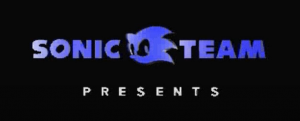
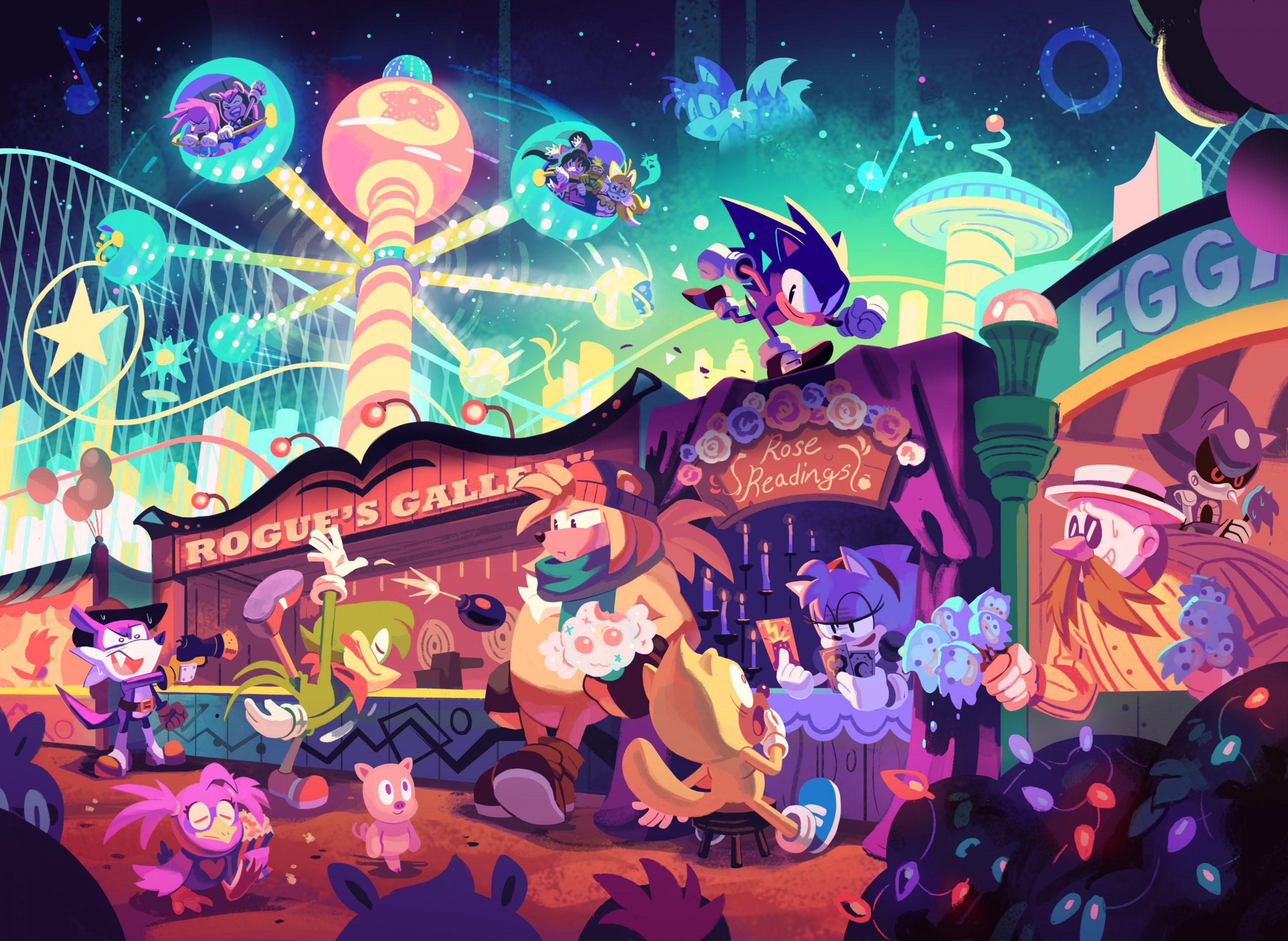
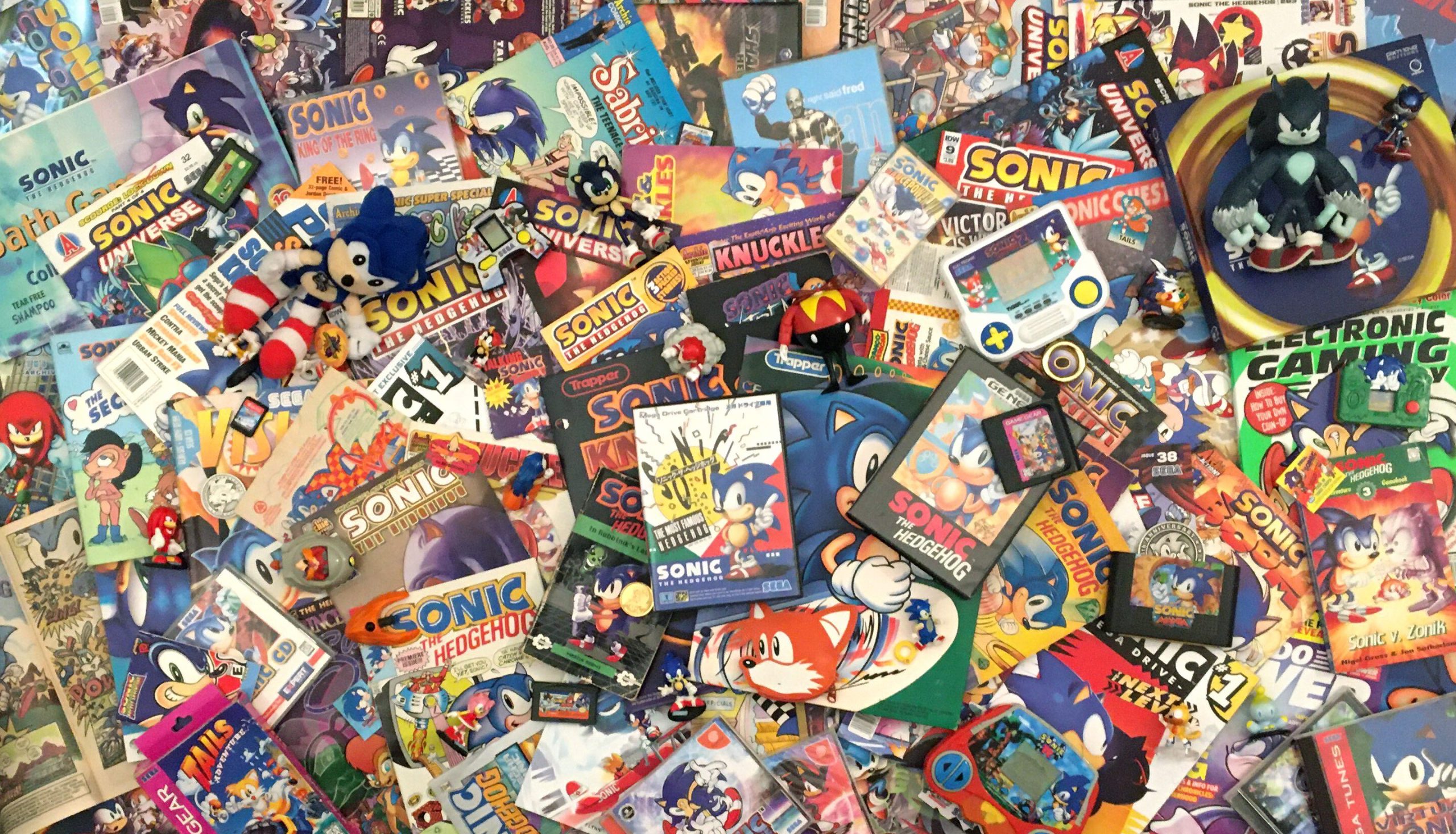
2 Comments
Amo a Sonic 3
Y